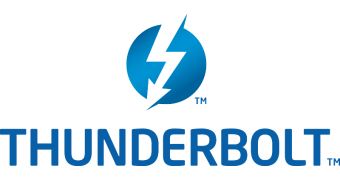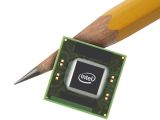Given the fact that Intel's Thunderbolt data transfer technology has just gone official, not to mention the fact that we're most likely going to see plenty of products based on it arrive on the market quite rapidly, we've decided to try to explain it for you as simple as possible, so that you'll know exactly what to expect from Thunderbolt-enabled devices.
Formerly known as LightPeak, the Thunderbolt technology from Intel is described by the company as a “high-speed, dual-protocol I/O technology,” which are, in fact, its two most valuable characteristics.
So, first of all, it's important to mention that Thunderbolt can attain theoretical data transfer speeds of up to 10 Gbps (gigabits per second), which is not only twice as fast as USB 3.0 (capped to 5Gbps), but also translates into some pretty impressive real-life transfer rates (around 800 MB/second).
In fact, as Ubergizmo reports, it seems that during their official Thunderbolt unveiling event, Intel demoed the interface's amazing speeds on a 2011 MacBook Pro (the only device currently out there to offer this type of interface), the average transfer rate ranging between 400 and 700 MB per second (a 4.5GB file was transferred to an external RAID enclosure in under 10 seconds).
Now, moving to the dual-protocol side of the Thunderbolt tech, we'll have to point out that this is indeed a very good idea by Intel, since it actually reduces the connectivity clutter around a system.
So, practically, beside supporting the PCI Express protocol (required for transferring data), Thunderbolt interfaces are also compatible with the DisplayPort protocol (meaning that users will be able to connect either a DisplayPort – compatible monitor or an external storage solution to the same port).
This, however, is not a major difference from the USB standard's features, given the fact that the Universal Serial Bus also supports both data transfer and video transfer protocols, but does lead us to believe that this is, ultimately, the future of connectivity: a single interfaces capable of carrying out multiple functions.
For end-users, Thunderbolt will only bring great things, enabling not only enhanced data-transfer rates, but also a higher degree of versatility, which are, after all, some pretty cool features, all things considered.
For OEMs and integrators, implementing Thunderbolt technology will be an easy enough process, since they'll only require a controller chipset from Intel and a dedicated connector (so guess who's going to make a pile of cash selling chips....again?)
As mentioned right from the start, we're most likely going to see plenty of Thunderbolt-enabled devices making their way onto the market, since many industry leaders have openly expressed their support for the new technology, and, as mentioned in a previous article, it remains to be seen whether Thunderbolt's popularity will manage to affect USB, and to what degree.

 14 DAY TRIAL //
14 DAY TRIAL // 
